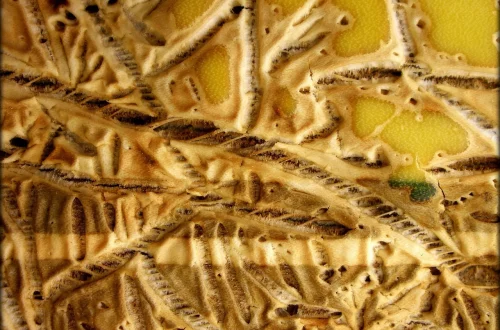
Understanding the Unique Characteristics of a Flattened Face
The concept of a flattened face has increasingly gained attention in various fields, including anthropology, medicine, and even aesthetics. This unique characteristic can be attributed to a variety of factors ranging from genetic predisposition to environmental influences. A flattened face often raises questions about the implications it may have on health, identity, and social interactions.
In many cultures, facial features are closely tied to perceptions of beauty and attractiveness. The flattening of the face can affect how individuals are perceived in social contexts, impacting everything from personal relationships to professional opportunities. Furthermore, the study of flattened facial structures provides insights into human evolution, migration patterns, and the adaptation of various populations to their environments.
Understanding the nuances of a flattened face can help demystify stereotypes and foster a deeper appreciation for human diversity. As we explore this topic further, we will delve into its various aspects, including the biological underpinnings, cultural implications, and potential health considerations associated with this distinctive facial structure.
Biological Factors Influencing a Flattened Face
The biological basis for a flattened face often involves a complex interplay of genetics and developmental factors. Certain genetic traits can predispose individuals to have a flatter facial structure. For instance, variations in genes responsible for craniofacial development can lead to distinct facial shapes. In many cases, these genetic traits are more prevalent in specific ethnic groups, reflecting the diverse evolutionary pathways humans have taken.
Additionally, the process of facial development in the womb can play a significant role in determining the shape of an individual’s face. Factors such as maternal nutrition, exposure to toxins, and overall health during pregnancy can influence craniofacial morphology. For example, conditions like fetal alcohol syndrome can result in a flattened facial appearance due to disrupted development.
Moreover, environmental factors also contribute to the development of a flattened face. In some regions, dietary habits may influence facial structure. For instance, populations that rely heavily on tough, fibrous foods often have stronger jaw muscles, which can lead to more pronounced facial features. Conversely, a diet lacking in certain nutrients may result in a less pronounced facial structure over generations.
The evolutionary perspective on a flattened face reveals fascinating insights about human adaptation. Some anthropologists argue that a flatter face may have developed as a response to environmental challenges, such as extreme cold or heat. In colder climates, a flatter face could help reduce heat loss, while in hotter regions, it may assist in dissipating heat more effectively.
Understanding these biological factors not only sheds light on the origins of facial diversity but also emphasizes the need for a nuanced view of what constitutes normalcy in human features. Recognizing that flattened faces can arise from a range of genetic and environmental influences allows for a more inclusive understanding of human beauty.
Cultural Perceptions of Flattened Facial Features
Cultural perceptions of flattened facial features vary significantly around the world. In some societies, these traits are celebrated, while in others, they may be stigmatized. The notion of beauty is often culturally constructed, influenced by historical, social, and economic factors. For example, in certain Asian cultures, a flatter facial structure may be associated with youthfulness and innocence, making it a desirable trait.
In contrast, Western beauty standards often favor pronounced cheekbones and defined jawlines, which can lead to negative perceptions of individuals with flatter faces. This discrepancy highlights the subjective nature of beauty and the importance of understanding cultural contexts. It also raises awareness about the potential for bias and discrimination based on physical appearance.
Media representation plays a crucial role in shaping these perceptions. The portrayal of characters in films, television shows, and advertisements often reinforces specific beauty ideals. When flattened faces are underrepresented or depicted negatively, it can contribute to the marginalization of individuals who possess these features.
In recent years, there has been a growing movement toward inclusivity and diversity in media representation. This shift aims to challenge traditional beauty standards and promote a broader understanding of attractiveness. By showcasing a variety of facial structures, including flattened faces, media can help normalize these features and reduce stigma.
Furthermore, cultural attitudes toward flattened facial features can impact an individual’s self-esteem and mental health. Those who feel marginalized or judged based on their appearance may experience anxiety, depression, or social withdrawal. Promoting acceptance and understanding of diverse facial structures is essential in fostering a supportive environment for everyone.
In summary, the cultural perceptions surrounding flattened facial features are complex and multifaceted. By engaging in open conversations about beauty standards and representation, society can work towards greater acceptance of all individuals, regardless of their facial structure.
Health Implications Associated with Flattened Facial Features
While a flattened face can be a normal variation in human anatomy, it may also be associated with certain health implications. Understanding these potential concerns is essential for both individuals and healthcare providers.
For instance, some genetic disorders, such as Down syndrome and certain craniofacial syndromes, can manifest as flattened facial features. These conditions often come with a range of other health challenges, including developmental delays, respiratory issues, and heart defects. Early diagnosis and intervention are crucial for managing these health concerns effectively.
Moreover, individuals with flattened faces may face unique challenges related to dental health. The jaw structure can influence bite alignment and overall dental function. In some cases, this may lead to issues such as malocclusion, which can cause discomfort and require orthodontic treatment. Regular dental check-ups and preventive care are vital for maintaining oral health in individuals with flattened facial features.
Another consideration is the potential impact on airway function. A flatter face can sometimes lead to a narrower airway, increasing the risk of sleep apnea and other respiratory issues. Individuals experiencing symptoms such as snoring or daytime fatigue should consult a healthcare professional for evaluation and potential treatment options.
It is important to note that not all individuals with a flattened face will experience these health challenges. Many people with this facial structure enjoy good health and do not face any significant medical issues. However, awareness of potential risks can empower individuals to seek appropriate care and maintain their well-being.
In conclusion, while a flattened face can be associated with certain health implications, it is essential to approach this topic with sensitivity and understanding. Each individual is unique, and health concerns should always be addressed on a case-by-case basis.
**Disclaimer:** This article is not intended as medical advice. For any health-related concerns, please consult a qualified healthcare professional.
Embracing Diversity in Facial Features
Embracing diversity in facial features is a crucial step toward creating a more inclusive society. As we have explored throughout this article, flattened faces, like all variations in human anatomy, contribute to the rich tapestry of human diversity. Celebrating these differences can lead to greater acceptance and understanding among individuals from various backgrounds.
Education plays a vital role in fostering appreciation for diverse facial structures. By promoting awareness about the biological, cultural, and health aspects associated with flattened faces, we can help dismantle harmful stereotypes and prejudices. Schools, community organizations, and media outlets can all play a part in educating the public about the beauty of diversity.
Art and literature can also serve as powerful tools for representation. By showcasing characters and subjects with a range of facial features, artists and writers can challenge conventional beauty norms and highlight the uniqueness of every individual. This representation can empower those with flattened faces to feel valued and accepted in their communities.
Moreover, social media has become a platform for individuals to share their stories and experiences related to facial diversity. By creating spaces for dialogue and connection, social media can help amplify the voices of those who may feel marginalized or overlooked. These platforms can foster a sense of community and solidarity among individuals with similar experiences.
In summary, embracing diversity in facial features is essential for promoting acceptance and understanding in society. By valuing every individual’s unique characteristics, we can work towards a more inclusive world where everyone feels seen and appreciated for who they are.




